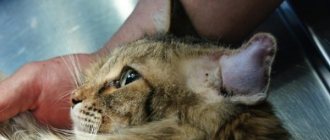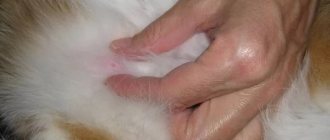Treatment of breast lipomas
The most likely treatment for a breast lipoma, unless there are suspicious signs on the mammogram, is to leave it alone.
A repeat clinical and mammographic examination is required after approximately 6 months. The breast surgeon delays the decision to biopsy until there are some signs of a suspicious change. This is because both doctors and patients usually prefer not to biopsy breast lesions that are more likely to be benign.
There is no effective conservative treatment for lipomas. Traditional medicine for breast lipomas is not only not practiced, but is contraindicated. The effect of traditional and non-traditional medicinal herbs on a fatty tumor has not been studied, and they certainly cannot prevent malignancy and stop its growth.
If suspected lipomas grow rapidly during the observation period, surgical removal is necessary.
Fatty tumors are surgically removed when:
- rapid increase in tumor size;
- pain syndrome;
- disturbing cosmetic defect;
- tissue necrosis.
Types of surgical intervention for lipomas are as follows:
- Aspiration of tumor contents
. By puncturing the mammary gland, the contents of the capsule are removed, but its shell (capsule) remains. Advantages: absence of scar changes, disadvantages: possibility of relapse due to the inability to remove the membrane. - Enucleation of the tumor itself.
Using either classical surgery or endoscopic surgery, the tumor is removed along with the capsule. Low-traumatic methods of tumor removal using laser or radio waves have also been developed. The laser allows you to remove the lipoma and cauterize the blood vessels, while the intervention is carried out at the desired depth. The radio wave method can remove small lipomas (up to 5-6 cm in diameter). All methods have their contraindications, for example, the use of radio waves cannot be carried out if metal implants are installed. - Breast resection
. Partial breast resection is performed for large lipomas or suspected malignancy, especially if there is a family history of cancer. A large pathological area, the lipoma itself and surrounding healthy tissue are removed.
Breast resection
What is a lipoma, a wen in a cat, and how dangerous it is
As such, a lipoma is a fatty tumor. It can form on the body of an animal, and even a person. It is not contagious and is not capable of degenerating into a cancerous tumor.
Most often, lipomas form in places where there is tissue without excessive fatty formations and deposits.
For example, it can be found on a cat’s tail, back or neck.
This does not apply to those lipomas that form in the subcutaneous fatty tissue. This kind of tumor, although in extremely rare cases, can degenerate into liposarcoma
, that is, into a malignant neoplasm of connective tissue. Another rare form of lipoma is liposarcoma, which develops in the mammary glands. In this case, the tumor greatly deforms the mammary gland itself.
Fortunately, the listed types of malignant degeneration are quite rare. In the vast majority of cases, wen does not cause significant harm to the body, with the exception of a visible cosmetic defect. In cats, lipomas often develop in the intermuscular space and can even grow to the bone.
Wen in a cat: symptoms and types of lipoma
This tumor, a wen in a cat, has the consistency of dough or even silicone, it is painless and mobile. But if it grows into muscle tissue, then the lipoma is fixed and becomes dense. Lipomas grow slowly
, but can grow to a very large size. In this case, infringement of nearby nerve trunks and large vessels cannot be ruled out. And if the wen is located on the neck, then infringement of the vessels that are responsible for cerebral blood flow, that is, for the blood supply to the brain, may occur.
- Wen are divided into:
Spilled, that is, infiltrative. Clearly limited or non-infiltrative.
The first type can degenerate into liposarcoma. They are difficult to remove and can grow to very large sizes. But the second type is more harmless and they can be easily removed, since they are limited to the surrounding tissues.
You can often see a cat’s wen in an “inconvenient” place, when it simply interferes with even walking. In this case, the cat may even limp.
It is better to remove such a wen, since due to constant trauma, the process of degeneration may begin.
Wen in a cat: for what reasons lipomas form
Lipomas may appear, but they never disappear spontaneously, like papillomas, for example. And even if the wen does not interfere with the cat’s normal life and movement, it is highly recommended to remove it. Wen forms in cats more often than in humans or dogs. Their appearance is often associated with a cat becoming infected with feline leukemia.
.
But why do they form and why not in all cats? The reasons may be both genetic factors, that is, predisposition, and lipid metabolism disorders in the furry body. This, in turn, is associated with a violation of enzyme metabolism, when fats entering the animal’s body are not broken down into energy and water, but are forced to be deposited in the thickness of the skin. Again, normally fat that is not broken down should be sent to the liver. Another pathology is associated with this, which we do not talk about in this article.
It is believed that the formation of wen in cats is a manifestation of the natural process of aging and wear and tear of the body.
Often the appearance of wen is associated with disruption of the liver and kidneys.
What is a wen and what does it look like?
A fatty tumor is a neoplasm that is located between the skin and muscles in loose adipose tissue and can. It feels like the consistency of dough or silicone, i.e. soft and elastic. There is normal mobility and painlessness. In some cases, a lipoma can grow into the muscles - in such cases, the mobility of the tumor decreases and its density increases. Wen, as a rule, grow very slowly, but are capable of growing to significant sizes.
Wen can appear anywhere there is loose fatty tissue. At first, the lipoma looks like a small, loose tubercle (bump), inactive in a relatively limited area. Depending on the conditions and condition of the body, the tumor begins to increase. Sometimes it grows to such a size that it involuntarily begins to attract attention to itself and provokes discomfort in the animal. This is explained by the fact that during the growth process the neoplasm can affect the nerve endings in the surrounding tissues.
Externally, a dog’s wen looks the same as a cat’s (photo)
Wen appears in dogs and cats for two main reasons:
- violation of fat metabolism;
- genetic predisposition.
The main metabolic disorders that provoke the appearance of wen include insufficiently correct functioning of the body's enzymatic system. This means that the animal’s body lacks the required amount or type of enzyme to fully break down accumulated fat into water and internal energy. Those. Lipomas appear not because too much fat accumulates in the body, but because it is not properly and fully broken down, resulting in the formation of intermediate substances that provoke tumor growth. It is because of this reason that the risk group consists of old animals and overweight animals.
Lipomas are most often found in dogs on the back, sides and tops of the limbs; in cats - on the stomach, in the chest area and along the upper surface of the hind legs.
Caring for a cat after removal of a wen
After surgery, the tailed friend requires care. During rehabilitation, you must strictly follow all the veterinarian’s instructions. He will explain in detail to the cat owner what needs to be done and how to properly treat the postoperative wound.
The rehabilitation period involves:
- Drip administration of drugs that prevent dehydration of the body.
- Use of sedatives and painkillers. The products are selected individually, taking into account the age and characteristics of the cat’s body.
- Use of antibacterial and anti-inflammatory drugs.
- Apply a bandage until the wound is completely healed. It should be changed every day and make sure that it is well fixed, otherwise an infection will get into the wound, which will complicate and slow down its healing. If the wen has been removed from the abdomen, a bandage is put on the animal.
- Putting a collar on your pet. It is necessary to avoid licking the wound.
- Postoperative suture care. It should be kept clean and treated if necessary.
- Constant control over the general condition of the animal. If inflammation or bleeding is detected in the surgical area, it is necessary to show your pet to a veterinarian as quickly as possible.
No correction of the cat's nutrition is required in this situation. It is recommended to place the pet in a warm, quiet place during rehabilitation. If there are children in the house, they should be asked not to cuddle the cat.
Treatment
If a pet has developed a wen, there are only two options - either cut it or leave it alone. Usually the doctor recommends removing it and not worrying. The operation is quick, often performed under local anesthesia, and the cat does not experience any pain or discomfort. Moreover, if the tumor is on the neck or the doctor has reasons to doubt its harmlessness.
If the neoplasm does not interfere with anything, they simply do not pay attention to the wen. However, this word here is not entirely true - the owner of the animal does not take any measures against the tumor, he simply regularly takes the cat for examination to monitor the dynamics.
Before surgery
Most often, the intervention does not present any difficulty for the surgeon and is performed under local anesthesia. The only exceptions are large and difficult-to-reach tumors.
Before intervention, the owner must:
- do not let the cat eat in the last twenty-four hours before being placed on the operating table;
- Give plenty of clean water to drink;
- write down and give the doctor a list of all medications that were given to the animal over the last period.
Special collar for wearing during the postoperative period
Operation
Removing a wen is not difficult at all. The surgeon cuts the skin, then separates the fat capsule from the healthy tissue and removes it. A suture is placed on the resulting hole, which can be removed after about a week to a week and a half.
If the cat has a growing tumor or is located in a hard-to-reach area, more time and care is required. Moreover, if the process affected large spinal nerves. In case of negligence or unprofessionalism, the cat may permanently lose the ability to move. First of all, the surgeon releases the affected muscles, which means that the incision area will be much larger. It will also take longer for the animal to recover from such intervention than after a conventional operation.
Removal of internal lipoma
Recovery
After the intervention, the cat needs rest and care; he is also prescribed sedative and anti-inflammatory medications, antibiotics, depending on the complexity of the situation. If there is a risk of dehydration, the pet is prescribed drips with an electrolytic composition.
When recovering from general anesthesia, a cat may behave differently. Some are tossing around and crying, others are trying to climb higher. It is strictly forbidden to do this to avoid injury. Immediately after the operation, the cat is put on a special protective collar that prevents the cat from licking or injuring the operated area. Symptoms usually go away within a few hours, then the cat returns to normal. Worsening of the condition requires immediate contact with a veterinarian.
After surgery, the cat needs peace and care
Forecast
The prognosis with timely access to the clinic and proper treatment is favorable. This can only be said for sure by studying the whole picture of the cat’s health, taking into account all the existing features and pathologies. Relapses are likely only in the case of germinating tumors.
Does the wen affect the overall well-being of the animal?
Most often, the wen does not interfere with the cat’s life in any way and is discovered by chance, while “stroking.” The exceptions are large tumors, which are also located deep in the internal organs and compress them - here the pet will show with its entire appearance that it is not feeling well. Often the lipoma begins to thicken, bulge, ulcerate, and blood may bleed from it - all these are signs that the mechanism of malignancy has already begun and it is necessary to immediately take the cat to the doctor to schedule an operation. In advanced cases, intoxication may occur from tumor breakdown products entering the bloodstream. So to say that lipoma is imperceptible to cats is to significantly embellish the reality.
It is important to constantly monitor the health of cats with lipoma.
What to do if the wen has opened
If the wen has burst, it is necessary to take the cat to the veterinarian as soon as possible for surgery and removal, since the risk of infection increases sharply. The doctor will remove the purulent contents and fat capsule and apply stitches. In no case should you try to heal the inflammation at home - this threatens the spread of the process and tissue degeneration.
So, lipoma in cats is not at all as harmless as it might seem at first glance. Of course, this is a benign formation, but control over it cannot be weakened, since any “good” can imperceptibly develop into “evil” and it is better to prevent this possibility. The operation is quick, uncomplicated and will not cause any disturbance to either the cat or the owner.
Source of the article: https://pets-expert.ru/lipoma-u-koshki/
Diagnosing lipoma in cats and preparing for surgery
It is possible to make an accurate conclusion that the swelling is indeed a lipoma only in a veterinary clinic when the appropriate procedures are carried out.
To diagnose a lipoma, the veterinarian performs a needle biopsy.
The veterinarian, in addition to a general examination, prescribes tests for the animal, X-rays and puncture examinations.
A puncture biopsy plays a significant role in the process of establishing the correct diagnosis. For example, when a lipoma in cats is located on the stomach, a piece of tissue removed from the depths of the tumor is sent for cytology. If a lipoma forms in hard-to-reach areas of the body, an ultrasound examination is used to determine the feasibility of surgical intervention.
Once the final diagnosis is established and the presence of a lipoma is confirmed, the formation is removed surgically.
In some cases, the specialist decides to leave the tumor intact, subject to constant monitoring of tumor progression.
Wen removal is carried out in a veterinary clinic using local anesthesia. If the tumor is large, the animal is put under general anesthesia.
An important point is to properly prepare your pet for a visit to the operating room. You should definitely inform the surgeon whether the animal took any medications before visiting the clinic. According to medical requirements, feeding the cat stops 24 hours before the upcoming operation. In this case, water is allowed to be given in the required quantity.
In an emergency situation, in case of bleeding or rupture of the tissue of the wen, the operation begins immediately, without preparatory fasting.
Important. You need to understand the need to accurately determine the nature of the tumor in order to competently design a treatment method
For the most accurate diagnosis, the procedure for taking tissue samples from the animal is carried out several times. This will protect your pet from unforeseen circumstances during surgical treatment.
Why are fatty cysts dangerous?
The location can be any, but more often it is the subcutaneous tissue of the back, neck, chest, and limbs. A small growth on the body, in the singular, does not cause much harm to the pet, but as the growth increases, discomfort and a deterioration in the quality of life are possible.
Located on the neck, the lump can compress large blood vessels that supply the brain, which leads to oxygen starvation of the tissues.
Large wen on the limbs or armpits cause inconvenience when walking, which is why the animal moves little and refuses to walk.
As the growth grows, the skin stretches, causing itching. Trying to get rid of it, the pet licks the surface, chews out tissue, as a result of which pyogenic bacteria enter the wound, causing an inflammatory process.
In females, a lipoma can form in the mammary glands. The neoplasm is injured and is also prone to degeneration into cancer.
Often fatty cysts appear inside the abdominal cavity, causing functional disruption of organs, their displacement and compression.
The difference between a benign tumor and cancer
A malignant lump is usually lumpy and has indistinct edges, unlike a lipoma, which appears as a smooth, spherical formation. Cancerous tissue grows quickly and is prone to ulceration, while wen develops slowly (if it does not grow into deep tissues) and is injured only under external influence.
A fatty cyst is usually soft, while a cancer lump is always hard and elastic.
There are other types of growths that require special attention and treatment to avoid serious complications.
It can be:
- papilloma (wart)
- Tumor
- abscess
- cyst
- hematoma
- mycetoma
- sporotrichosis
Causes of lipoma
The reasons for the appearance of wen on the body can be different. Lipoma can be either an independent formation or appear against the background of other diseases. The main causes of lipoma are the growth and compaction of subcutaneous fat. The following factors can provoke this process:
- Hereditary disposition - lipomatosis is inherited in an autosomal dominant manner. If the disease was diagnosed in parents, then the probability of such formation in children is 75%.
- Disturbances at the stage of embryonic development - the cause of the formation of wen in uncharacteristic places is associated with dystopia of embryonic fat cells.
- A number of diseases and syndromes - the answer to the question of why lipomas appear may be the presence of certain pathological processes in the body. These are Madelung's disease, Dercum's disease, Cowden's syndrome, etc.
- Endocrine disorders - the risk of developing wen increases the hypofunction of the pituitary gland, thyroid and pancreas. Lipomatosis can also be associated with changes in estrogen levels, diseases of the genital area, and malignant tumors of the upper respiratory tract.
- An insufficiently active lifestyle leads to stagnation, which leads to the formation of fat deposits and blockage of the gland duct.
- Impaired tissue trophism – due to impaired nutrition of nerve tissue, free fat accumulates in the subcutaneous fat layer.
- Injuries – after injury, cell nutrition and metabolic processes are disrupted. As a result, the sebaceous glands can become clogged. The causes of wen on the face may be associated with injuries.
- Improper skin care - this factor is sometimes an explanation for why white wen appears on the face. This can be caused by the use of very oily creams or poor quality cleansing of the skin after cosmetics. White lumps are often the result of blocked gland ducts.
- Age factor - despite the fact that subcutaneous wen can appear at any age. However, after 30-40 years, metabolic processes slow down, and the body’s defense mechanisms decrease. Therefore, after this age, lipomas appear more often.
- Improper nutrition - the appearance of wen can provoke a prolonged insufficient supply of nutrients to the body.
- Bad habits - they lead to a deterioration in the function of the immune system and disruption of metabolic processes.
- General diseases - diseases of the liver, digestive system, urinary system, diabetes and other diseases associated with metabolic disorders, hormonal imbalance.
Causes
Doctors hypothesize that lipoma develops as a result of metabolic changes that arise due to a deficiency of protein regulatory enzymes. The appearance of wen in a cat is due to the blocking of the ability to break down fat due to a lack of the enzyme lipase. Cats are significantly less likely to develop this disease than dogs.
The most common causes of wen development:
- elderly animals;
- autosomal dominant heredity;
- metabolic disease;
- hormonal disbalance;
- diseases of an endocrinological nature;
- feminine animals.
How to distinguish a wen from an abscess, hematoma, tumor?
Ear hematoma in a cat
It is easy for an ignorant person to confuse a wen with an abscess, hematoma or malignant tumor. However, these formations have significant differences. Knowing the characteristics of each of them, it is easy to determine what kind of bump is felt under the skin of a four-legged pet on the stomach, back or other part of the body. Information on how to distinguish a wen, abscess, bruise and tumor from each other:
Breast tumor
| Sign | Lipoma | Abscess | Hematoma | Tumor |
| Density degree | Low | High | ||
| Smell | Absent | There is a characteristic smell of pus | Absent | |
| Mobility | Easily moves when palpated | Absent | ||
| Soreness | Usually not noted | Present | ||
| Invasion into surrounding tissues | Maybe | Excluded | Always grows into adjacent tissues | |
| Condition of the skin at the site of formation | Not changed | Hot, red, inflamed or unchanged | Hot, bloodshot, bluish or yellowish | Changed, compacted |
| Growth rate | Slow | Do not grow | Fast | |
| Blood supply | Doesn't have | Actively supplied with blood |
How to distinguish a lipoma from a tumor in a cat and what to do with it: photos, signs and removal of the wen
A lipoma in a cat is a subcutaneous formation that is not life-threatening. However, this does not mean that the wen can be ignored, hoping that it will disappear on its own.
This fatty tumor can grow to enormous sizes and in some cases develop into a malignant neoplasm.
What does a wen look like on a cat? How to distinguish it from an abscess, hematoma and cancerous tumor? What treatment does a lipoma require? How to care for your pet after its removal? Could she appear again?
What is lipoma?
In veterinary medicine, this term refers to a benign connective tissue tumor that develops in the layer of subcutaneous loose connective tissue and is capable of growing deep between the muscles and blood vessels.
According to veterinarians, these formations appear due to metabolic changes arising from a deficiency of protein regulatory enzymes.
Their occurrence in cats is due to inhibition of the process of fat breakdown due to a lack of lipase.
Frequent reasons for the development of wen in these animals:
- hereditary predisposition of an autosomal dominant type;
- disruption of hormonal levels and metabolic processes in the body;
- endocrine pathologies.
Lipomas are less common in cats than in dogs. At the same time, older animals and females are most predisposed to their appearance. A fatty tumor in a pet (see photo) can appear on any part of the body: on the head, stomach, back, sternum, ear.
How to distinguish a wen from an abscess, hematoma, tumor?
Ear hematoma in a cat
It is easy for an ignorant person to confuse a wen with an abscess, hematoma or malignant tumor. However, these formations have significant differences.
Knowing the characteristics of each of them, it is easy to determine what kind of bump is felt under the skin of a four-legged pet on the stomach, back or other part of the body.
Information on how to distinguish a wen, abscess, bruise and tumor from each other:
Breast tumor
| Sign | Lipoma | Abscess | Hematoma | Tumor |
| Density degree | Low | High | ||
| Smell | Absent | There is a characteristic smell of pus | Absent | |
| Mobility | Easily moves when palpated | Absent | ||
| Soreness | Usually not noted | Present | ||
| Invasion into surrounding tissues | Maybe | Excluded | Always grows into adjacent tissues | |
| Condition of the skin at the site of formation | Not changed | Hot, red, inflamed or unchanged | Hot, bloodshot, bluish or yellowish | Changed, compacted |
| Growth rate | Slow | Do not grow | Fast | |
| Blood supply | Doesn't have | Actively supplied with blood |
Types of lipoma and their symptoms
Lipomas in cats can be single or multiple. In the latter case, we are talking about lipomatosis, which develops due to disruption of the endocrine system.
Typically, wen does not have pronounced signs and does not affect the well-being of animals in any way. A cat has just such a formation if it is soft and moves under the skin upon palpation.
Information about the types of lipomas that are detected in cats:
| Types of wen found in cats | Description | Features of treatment |
| Infiltrative | A formation consisting of bundle-shaped fatty fibers with blurred boundaries. It can reach enormous sizes and develop into a malignant tumor. | Surgical removal is difficult due to the penetration of the fatty tumor into nearby tissues (muscles, vascular bundles). |
| Non-infiltrative (simple) | The neoplasm is small in size with clearly defined edges and does not affect adjacent tissues. | Removal is not difficult. |
Animal treatment
Before prescribing treatment to a tailed patient, the veterinarian will definitely conduct an examination (cytological examination of biomaterial, radiography, computed tomography or magnetic resonance imaging) to confirm his guesses about the presence of a wen. These formations cannot be treated with drugs or folk remedies. Information on how to eliminate wen in cats:
| Features of the wen | Treatment methods | Peculiarities |
| It increases in size, affects nearby tissues, is located in an inconvenient place, interfering with the full life of the animal, or is constantly injured | Surgical | Depending on the size of the lump, the operation is performed under local or general anesthesia. The day before, you need to stop feeding your pet, giving him only water. For non-infiltrating lipomas, surgery is easy. The doctor makes a small incision in the animal's skin, removes the tumor and stitches the wound. Infiltrative formations require more complex surgical intervention, since removal of the wen and part of the adjacent muscle tissue is required. If there is a purulent process, the surgical field is drained. |
| Small, not causing any inconvenience to the cat | Control of changes in the size of the formation | If a decision is made not to undergo surgery, the animal owner must constantly monitor the dynamics of changes occurring in the lump. The probability of self-healing is low, but still exists. |
Caring for a cat after removal of a wen
The rehabilitation period involves:
- Drip administration of drugs that prevent dehydration of the body.
- Use of sedatives and painkillers. The products are selected individually, taking into account the age and characteristics of the cat’s body.
- Use of antibacterial and anti-inflammatory drugs.
- Apply a bandage until the wound is completely healed. It should be changed every day and make sure that it is well fixed, otherwise an infection will get into the wound, which will complicate and slow down its healing. If the wen has been removed from the abdomen, a bandage is put on the animal.
- Putting a collar on your pet. It is necessary to avoid licking the wound.
- Postoperative suture care. It should be kept clean and treated if necessary.
- Constant control over the general condition of the animal. If inflammation or bleeding is detected in the surgical area, it is necessary to show your pet to a veterinarian as quickly as possible.
No correction of the cat's nutrition is required in this situation. It is recommended to place the pet in a warm, quiet place during rehabilitation. If there are children in the house, they should be asked not to cuddle the cat.
Possible complications
Usually, wen does not cause any inconvenience to cats and is not dangerous to their health. However, in some cases they can lead to the following complications:
- The lump on the neck compresses the blood vessels and trachea, which can lead to breathing problems and oxygen starvation of the brain.
- Difficulty moving in the presence of a mass on the limbs.
- Pressure on internal organs and disruption of their functioning during the development of a large lipoma.
- Degeneration into a malignant neoplasm. Most wen are characterized by slow growth. However, under unfavorable circumstances, they can degenerate into cancerous tumors - liposarcoma. This usually occurs due to injury to the lump.
Can the wen appear again?
The situation becomes more complicated if multiple wen are found on the pet’s body. After treating a four-legged pet for lipomatosis, it is recommended to review its diet.
In some cases, the animal may need to follow a lifelong diet with limited fat, as well as take medications aimed at normalizing lipid metabolism.
Such measures will prevent the re-formation of cones.
Source: https://MurKoshka.ru/zdorovye/bolezni/lipoma-u-koshki.html
Methods for treating wen
Wen (lipoma) is always a benign tumor that rarely causes any inconvenience to the animal.
If this neoplasm:
- small sizes,
- painless,
- has no growth dynamics,
- does not affect the life of the pet,
- has no signs of inflammation,
- does not open on its own,
then it is customary to leave it in the format in which it is. You should not smear the wen with anything, pierce it, apply compresses, etc. – there is always a risk of provoking increased tumor growth and/or its degeneration into cancer.
In all other cases, the lipoma can only be removed surgically. Especially when the lipoma is located in a place that is subject to constant mechanical stress (armpit, for example).
All lipomas are divided into:
- non-infiltrative;
- infiltrative (spilled).
The first group of tumors has a clear, limited contour, making them very easy to remove. The second group is characterized by germination into neighboring tissues and is difficult to remove (since damaged neighboring areas also have to be cut out). Also, it is this group of wen that most often degenerates into an oncological (malignant) form.
It is strictly forbidden to independently open (pierce) any seals on the body of pets, because... a non-specialist will never determine for sure what is hidden under one or another subcutaneous lump, and whether it is a wen and benign!
Before the operation, the animal must be prepared. For at least 12 hours (ideally 24 hours), animals - be it a cat or a dog - are not fed, but water is given upon request. This contributes to a faster effect of general anesthesia and prevents narcotic vomiting. Local novocaine or ledocaine anesthesia is also used (ledocaine is contraindicated in cats due to individual sensitivity and numerous severe side effects, including death). If the wen ruptures or there are signs of bleeding from it, the operation is performed urgently and without fasting preparation.
Removal of the wen usually occurs through a small incision. If infiltration (growth into surrounding tissues and muscles) was observed, then the fatty tumor will be removed along with the affected areas. If the tumor is large, a drainage must be formed - a place for the drainage of exudate, which will certainly form in the postoperative period. The postoperative wound will also be washed through the drainage.
Fatty tumors that are located on the border with the main nerve ganglia or branches deserve special attention - operations in such cases are carried out with extreme caution so as not to catch them and not to disrupt the innervation (patency of nerve impulses)
- If there are any signs of purulent inflammation of a postoperative wound, you should immediately contact a veterinary clinic for help, and not necessarily the doctor who operated (although this is recommended!). It is also necessary to monitor the wound dressing and comply with all the specialist’s requirements.
- The likelihood of recurrence after surgery is minimal. Exceptions are infiltrated lipomas, which are very difficult to remove completely, so cases of the return of wen with this form of neoplasm are quite possible. If there is a genetic predisposition to the formation of lipomas, they may reappear not only in the place where surgical removal was performed, but also in any other place on the animal’s body.
Depending on the outcome of the operation, the cat/dog may be prescribed a course of antibiotics, painkillers and sedatives.
If, after a biopsy, a malignant degeneration of the wen is determined, then chemotherapy is prescribed. Typically, a chemotherapy course consists of the following drugs: prednisone, vincristine, cyclophosphamide and doxorubicin. In 71% of all cases, therapy has a positive effect. Schemes and dosages are calculated strictly by a veterinary specialist, based on this specific situation.
Animal treatment
Before prescribing treatment to a tailed patient, the veterinarian will definitely conduct an examination (cytological examination of biomaterial, radiography, computed tomography or magnetic resonance imaging) to confirm his guesses about the presence of a wen. These formations cannot be treated with drugs or folk remedies. Information on how to eliminate wen in cats:
| Features of the wen | Treatment methods | Peculiarities |
| It increases in size, affects nearby tissues, is located in an inconvenient place, interfering with the full life of the animal, or is constantly injured | Surgical | Depending on the size of the lump, the operation is performed under local or general anesthesia. The day before, you need to stop feeding your pet, giving him only water. For non-infiltrating lipomas, surgery is easy. The doctor makes a small incision in the animal's skin, removes the tumor and stitches the wound. Infiltrative formations require more complex surgical intervention, since removal of the wen and part of the adjacent muscle tissue is required. If there is a purulent process, the surgical field is drained. |
| Small, not causing any inconvenience to the cat | Control of changes in the size of the formation | If a decision is made not to undergo surgery, the animal owner must constantly monitor the dynamics of changes occurring in the lump. The probability of self-healing is low, but still exists. |
Treatment: effective methods
If an animal requires general anesthesia to remove a tumor, then it is not fed beforehand.
In most cases, surgical removal of the wen is performed in a veterinary clinic. The tumor is easily removed, while the operation is light and local anesthesia is required. If the wen is localized in hard-to-reach places, then it is recommended to use general anesthesia. Before surgery, the cat is prepared by performing the following steps:
- Inform the specialist about possible medications taken by the animal.
- The pet is not fed the day before removal.
- Give the required amount of water.
If a cat's wen bursts, emergency surgery is required. The operation lasts on average about an hour, during which the surgeon makes an incision and excises the tumor capsule. After which the cavity is carefully sutured, and after 1-2 weeks the sutures are removed if recovery is successful. With an infiltrating lipoma in a cat that has grown into muscle tissue, the operation takes longer.
Recovery process
Although surgery to remove a tumor from a cat is not complicated, it is still necessary to follow the veterinarian’s recommendations during the rehabilitation period so that the pet recovers quickly. After surgery, the following recovery measures are taken:
The animal's seams will remain intact if it wears a special collar.
- give the cat sedatives, antibacterial and anti-inflammatory drugs;
- electrolytic solutions are administered to prevent dehydration;
- carefully monitor the condition and nutrition of the sick pet;
- Put a protective collar on the animal so that it does not scratch the postoperative sutures.
General characteristics of the disease
So, what is it – a lipoma? The neoplasm is a plastic, moving subcutaneous lump filled with fatty tissue. It can be located anywhere on the animal's body, but is more often found on the chest, groin area and back. When pressing on the bulge, the animal does not feel any discomfort or painful conditions. With age, the wen tends to grow to large sizes, but does not pose a threat to life if it does not affect vital organs during growth, but can cause inconvenience during movement and bowel movements.
Lipoma does not threaten the life of the animal, but it can cause some inconvenience.
According to their characteristics, lipomas are divided into:
The former tend to penetrate into surrounding tissues, are quite difficult to remove and can progress to the malignant stage of development. The main component is bundle-shaped accumulations of fatty fibers and rapidly acquire large-scale dimensions, spreading throughout the entire area of the animal’s body.
The latter are small in size and clearly localized in a specific area of the body and are easy to remove.
Visually, the tumor looks scary, but when it forms in places that do not pose a threat to life, it is harmless. Localization of the wen on the head or neck of the animal can pose a danger. As it grows, it compresses the vessels that supply the brain with oxygen and blood cells, which can lead to brain hypoxia and death.
Important. When a soft, movable neoplasm under the skin is discovered in a pet, many owners neglect to visit the veterinarian, realizing that such a lump does not cause any inconvenience to the animal.
However, this is a big misconception, since, firstly, a wen can rapidly increase in size, and secondly, without special medical education, a more dangerous disease can be mistaken for a wen - a cyst or a malignant tumor (fibrosarcoma).
Types of lipoma and their symptoms
Lipomas in cats can be single or multiple. In the latter case, we are talking about lipomatosis, which develops due to disruption of the endocrine system. Typically, wen does not have pronounced signs and does not affect the well-being of animals in any way. A cat has just such a formation if it is soft and moves under the skin upon palpation. Information about the types of lipomas that are detected in cats:
| Types of wen found in cats | Description | Features of treatment |
| Infiltrative | A formation consisting of bundle-shaped fatty fibers with blurred boundaries. It can reach enormous sizes and develop into a malignant tumor. | Surgical removal is difficult due to the penetration of the fatty tumor into nearby tissues (muscles, vascular bundles). |
| Non-infiltrative (simple) | The neoplasm is small in size with clearly defined edges and does not affect adjacent tissues. | Removal is not difficult. |
Signs and treatment of wen in a cat
A fatty tissue is a neoplasm, which consists mainly of adipose tissue, but may also contain connective tissue. It is benign and does not pose a threat to the furry’s life, but you should definitely make an appointment for your pet to be examined by a veterinarian.
Mostly lipoma consists of fat and is formed in all parts of the body where this tissue is present - this includes subcutaneous tissue and internal organs. Lipoma usually grows slowly. Often it moves deeper into the body, pushing apart the muscles and blood vessels, right up to the periosteum - then its growth is accompanied by painful sensations and impaired blood flow. Treatment is not particularly difficult.
Lipoma can appear in all areas of the body where adipose tissue is present
Most often, the doctor recommends removing the wen, especially if it prevents the cat from living, eating, running normally, or is located in potentially dangerous places (for example, in the neck area). The operation is simple and takes little time. But there are also infiltrating fatty tumors that grow into the thickness of the muscles and blood vessels. They are weakly expressed, and their boundaries are not so easy to determine. Their removal is more difficult and it is these neoplasms that are more often prone to malignancy.
Before intervention, it is necessary to dismiss other diagnoses - cancer, cyst suppuration, other types of neoplasms. Self-medication is absolutely unacceptable and extremely dangerous.
Diagnostics
The diagnosis is made by a veterinarian based on an external examination, as well as X-ray and ultrasound examinations, and histological analysis. Usually, an experienced specialist sees a lipoma immediately, since it has clearly defined boundaries and is easily visible and palpable. But sometimes the tumor arises deep inside, has blurred edges and causes pain. Benignity and malignancy here are determined not by eye, but by the results of examining a tissue sample. In any case, self-diagnosis is unacceptable; the final verdict rests with the doctor.
During the diagnosis, the veterinarian will determine whether the tumor is benign or malignant
If a lipoma sits deep in the internal organs, its presence can only be guessed by indirect signs. To get a complete picture, the veterinarian resorts to modern research methods, such as MRI and CT. They allow you to accurately determine the location and size of the tumor.
Reasons for appearance
No one can accurately answer the question of where a particular cat’s wen came from. According to experts, the following are usually to blame for the occurrence of tumors:
- genetics;
- metabolic disorder;
- hormonal disorders;
- old age (most often cats over nine years old suffer from this);
- pathologies of the endocrine system (such as hyperthyroidism);
- sedentary lifestyle;
- accompanying illnesses
Most often, lipoma appears in cats over nine years of age.
It is widely believed that wen is more common in obese individuals. It's a delusion. Of course, excess weight and overeating lead to metabolic disorders and the occurrence of pathologies, which means the risk of lipoma increases, but this depends not only on the weight of the cat. Skinny cats are also at risk of getting sick. At the moment, the main reason for the growth of adipose tissue is considered to be a lack of the enzyme responsible for the breakdown of fat - lipase.
Ixodid tick in a cat
What is a wen
A wen is a benign soft formation on the skin in the form of a lump. It is filled with overgrown fat. There are also lipomas containing connective tissue; they have a more dense structure.
Do cats have wen? Skin lipoma can form in any type of pet, as well as in humans. After all, such a neoplasm grows from subcutaneous fat, which is found in all mammals. The appearance of such a tumor indicates a disorder of lipid metabolism in the body.
A photo of a cat's wen can be seen below.
Types of lipomas
Fatty tumors are divided into:
- infiltrative;
- non-infiltrative.
It is very easy to work with the first type, since they have clear contours, are easily palpable and visible, and are not connected to neighboring tissues and organs. The second ones are much more serious and imply greater difficulty in removal. This is due to the fact that it is necessary to cut out not only the area under the tumor, but also part of the neighboring tissues affected by it. It is this type of wen that is most prone to malignancy. When treating them, radiotherapy is also prescribed, in addition to surgery, which significantly increases the possibility of a full recovery.
Lipoma from the inside
Disease prognosis
The prognosis of the disease, subject to surgical intervention, is favorable, especially if the size of the wen is small and the cat is in good physical condition. Relapses of the disease are rare. Almost all cases of relapse relate to infiltrating variants of the disease. Recently, veterinarians have been practicing radiotherapy for such forms of the disease, which has significantly increased the percentage of cases of complete recovery.
Lipoma or wen are diseases for which self-medication is unacceptable. At best it will be ineffective, and at worst it will be harmful. Therefore, the only possible way out in such a situation is to visit a veterinary clinic.











